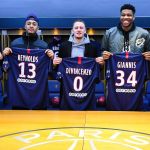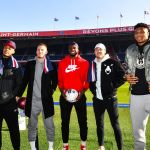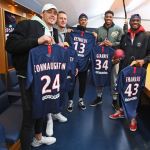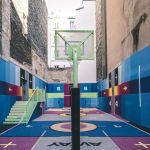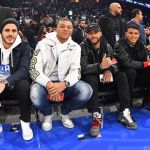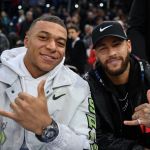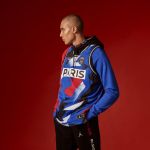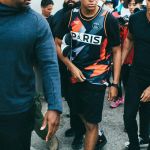
Why Paris is the best city to host NBA Global Games
The French capital is much more akin to the States than London
January 27th, 2020
Since 2011, the NBA has played every year, with the exception of the 2012-13 season, a regular-season game in Europe. The event is part of the framework of the NBA Global Games, the series of preseason events and regular-season games that the NBA is playing around the world trying to expand its brand as much as possible. A brand whose value - not being the NBA a public company - is not public, but which Forbes’ reports estimate is around 8 billion dollars for 2018: still lagging behind the GIANTS MLB and NFL, and which in recent years has undergone some slight decline (TNT has seen its ratings drop by 22% and ESPN by 5%, relevant data given the huge impact of TV in the revenues of the league). The exploration of alternative markets to the domestic one is therefore essential for the NBA. For Europe, the choice has always fallen on London, because, according to Commissioner Adam Silver:
«One of the reasons London is considered to be so important is that it appears to be, for us, a hub in Europe. It’s easily accessible for people from throughout Europe. This particular facility, the O2 arena, last I looked is the highest grossing arena in the world».
Then Brexit happened and this year the regular-season match of the Global Games, moved to Paris. A city whose arena, the AccorHotel, is not at The O2 levels, but is right on many levels to host the NBA.
In so many ways, the choice of Paris seems much more obvious and consistent than that of London. As for basketball, the French capital has a much more similar DNA to the United States than its English counterpart, besides having exported a very high number of champions: in addition to Batum, present on the field with the Charlotte Hornets, and Ronny Turiaf, who is practically an NBA ambassador in France, it’s impossible not to immediately associate the idea of the NBA and France with Tony Parker, the NBA champion with San Antonio, almost certain Hall-of-Famer and symbol of the possibility for European players to succeed in the States. Tony Parker is the most anticipated guest at all the NBA events he has organized in Paris for the game: he's at the NBA House in downtown Paris as well as a special guest on the parquet floor before the Charlotte Hornets and Milwaukee Bucks will play against each other.
The choice to use Paris as the center of the entire week of events that will culminate in the game is dueto a set of cultural factors as to commercial and brand dynamics, which make Paris the place-to-be of the next few years for both basketball and for the NBA. A few days before the entire NBA media team arrived in town, Stephane Ashpool had announced the remake of Pigalle Basketball's Nike playground, and Jordan brand had hinted that before the game they would unveil the new Paris Saint Germain’s uniforms, as well as the apparel that accompanied the release. The ability to associate football with the NBA is, for the NBA itself, one of the best ways to try to expand as much as possible its catchment area and interest in Europe, a basin that - although very large - is often composed of a niche audience, not always able to absorb all the diversity of the NBA industry.
If in the 90s and early 2000s in fact the NBA aesthetic had accompanied the advance of streetwear and street culture, headed by Jordan and the Jordan brand, in the following years the appeal of NBA as a brand and the resulting culture buzza round it has decreased slightly, replaced by the important return of football to the world’s aesthetic scene, especially in Europe. It became important, therefore, to try to build bridges between the two worlds that could be functional to both realities. The connection can work especially for reasons of a personal nature: if the NBA culture has influenced and continues to influence the urban and rap universe - which has become dominant today – it’s easy for today's football champions - such as Neymar or Mbappe - to approach that aesthetic in a simpler way, having grown up with those same cultural references. Jordan Brand was the first to try to capitalize on this trait d'union, making the uniforms of PSG and launching a first capsule collection in 2018 and – and even before, in 2016 – signing Neymar in as a Jordan athlete and allowing him to create a collection that included apparel, accessories, sneakers and football shoes. If Paris was already a great idea for the NBA, the fact that Paris Saint Germain became the most hyped team on the planet, did nothing but confirm the success of the operation.
The first time of the NBA in Paris was memorable. The teams involved in the game, Charlotte and Bucks, had a different, but still sensible, appeal. On one side was the reigning MVP, Giannis Antetokounmpo, on the other hand Michael Jordan's team, the only one to wear Jordan Brand, whose star is a French player, Nicholas Batum. Even the location of the NBA House - in the heart of Paris' Le Marais neighborhood, one step away from Supreme, BAPE and the city's major stores - restored the feeling of a context that was perfectly relevant to a huge industry like the NBA. Everything in the NBA, from The Air Force 1 customization organized by Foot Locker, to interviews with NBA players to the chances of winning gadgets and buying merch, have tried to draw the public closer and mix it with that streetculture.
The pitch also helped with the success of the operation, with an open and balanced game, which allowed the public to be able to observe Giannis' supernatural talent live for the first time. In the front row instead Neymar and Mbappe, with at their feet two of the most anticipated releases of the year: the Off-White™ x Air Jordan 5 and "Air Dior" respectively. The two stars of PSG are now the best possible NBA spot for Europe, the perfect symbol of the contamination between two sports that arise from very different cultural origins, but that will end up talking more and more, opening new opportunities for the NBA brand.








































.png)


.jpg)















